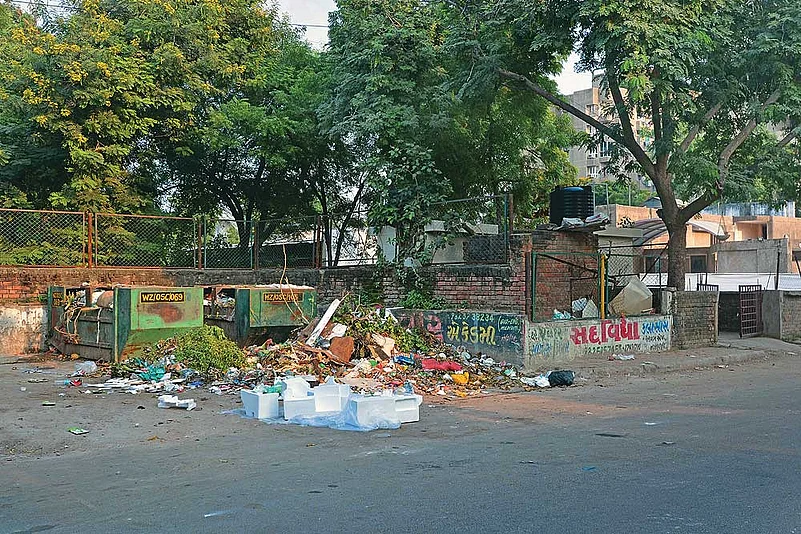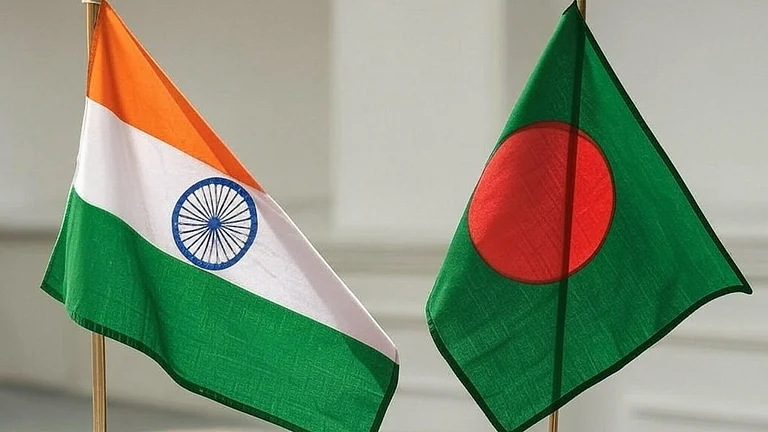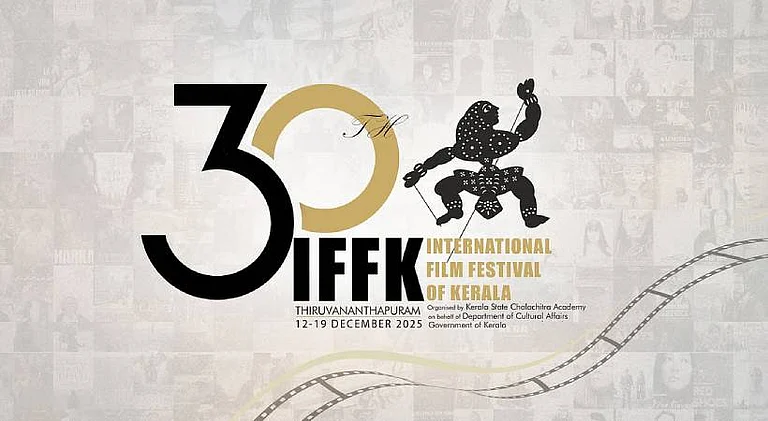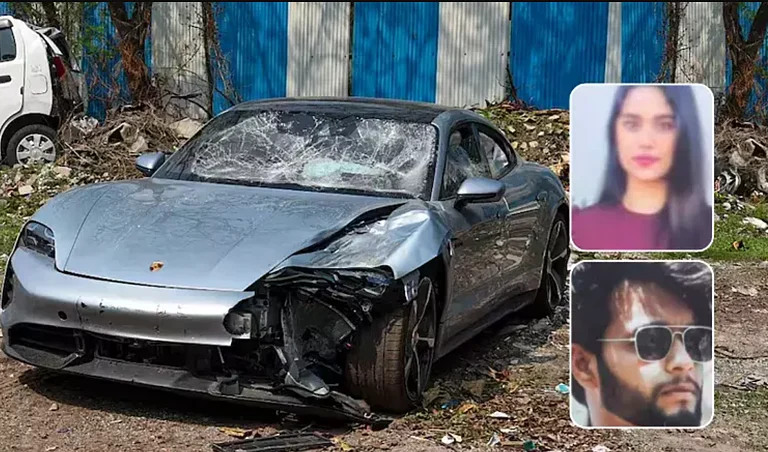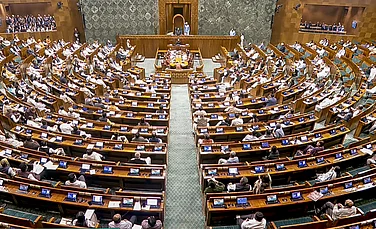Gandhinagar, the state capital of Gujarat, has been the pride of successive chief ministers. More so of Narendra Modi who used his decade-long stint at the helm to build it up as a global-window-shoppers’-delight of ‘Brand Modi’, aka the Gujarat model of development.
So first let’s visit Sector 9’s government bungalows, a segregated, spanking new set of abodes where the district top brass live. Just a row behind are overflowing garbage bins, loitering cows and plastic refuse being burnt regularly. Weeks after the Chinese president’s visit to Ahmedabad and the grand lighting in Gandhinagar, the main thoroughfare of Sector 9 still remains in darkness as if compensating for the power splurge. Across the road is the office of the Gujarat Pollution and Control Board (GPCB), the state’s watchdog body. The frontage is spic and span, the back alley an overflowing gutter, which has been spilling sewage for the last one year. Interestingly, top civil servants, both serving and retired, as well as their better halves residing in the neighbouring Sector VIII regularly and nonchalantly negotiate this stinkpot stretch on their daily morning walks. Most of these drains are choked with plastic, notwithstanding the fact that Gandhinagar is a declared ‘plastic-free zone’. Cheek by jowl stands the state secretariat, an imposing edifice from where Modi had launched his ‘Nirmal Gujarat’ campaign which has now metamorphosed into the ‘Swachh Bharat’ crusade.
At Modi’s initiative, the entire secretariat has been overhauled to give both its exteriors and interiors a corporate look at great cost. The work still continues even after he has moved over to Delhi. But habits die hard, walk on to any floor and you can easily find a toilet, you just have to follow your nose. Behind the secretariat is a natural wooded forest, a green zone that used to be a feast for the eyes but is now used to dump all manner of construction waste. And of course for ‘open defecation’. Mind you, this is not even 500 yards from the secretariat where the blueprint of a toilet for every home is finding expression.
Just 30 km from Gandhinagar, Ahmedabad hosted the Chinese president Xi Jinping at the Sabarmati riverfront, another of Modi’s showcase projects. Decked up like a bride, the Sabarmati riverfront was a sight for sore eyes. Conveniently glossed over in the talk to replicate Sabarmati on the banks of the Ganga at Varanasi are the dangerously high pollution levels of the river. A survey by Paryavaranmitra, an NGO, earlier this year showed that the river water falls way below the quality criterion set by the Central Pollution Control Board (CPCB). As against the standard pH level—a measure of acidity in liquid—of 5/5 for inland surface water, it was 6.75 in the Sabarmati. The norm for total suspended solids for inland surface water is 100 mg per litre; Sabarmati had total suspended solids of 530 mg per litre.The chemical oxygen demand (COD) level was 720 mg per litre as against the norm of 250. The biochemical oxygen demand (BOD) level was 288 mg per litre as against the standard requirement of 30. This was indicative of high levels of pollution, apparently caused by offloading of effluents including chemicals into it. A Pakistani delegation which visited the riverfront to replicate it on the river Ravi in Lahore after Prime Minister Modi waxed eloquent about it to his counterpart Nawaz Sharif saw slimy algae and rotting waste floating in it!
The Ahmedabad municipal corporation had gone into overdrive with a Rs 4 crore-plus cleanliness drive, even recarpeting and dolling up the Ahmedabad roads likely to be used by the Chinese head of state. Beyond, it was the same old bedraggled state with potholed roads made worse by the relentless barrage of rain.
Ahmedabad, the biggest and the oldest municipal corporation of Gujarat, has had the benefit of ‘Nirmal Gujarat’ for long years. Pirana, the main dumping yard, gets on an average 4,200 MT garbage daily. But it’s able to dispense with just 1,800 MT a day for various purposes. Thus the daily leftover is 2,200 MT. One estimate says there is 1.96 crore MT of accumulated garbage at the site visible in the shape of black hills emitting stench and methane in an extended area. A project for extracting fertiliser and energy from this garbage has been in the works for long. Officials say the contract’s been given and part of it is being used to make fertiliser but that’s about all so far. The pile-up continues unabated.
Now let’s take a road journey to Porbandar, the birthplace of the Mahatma, the man who by personal example pioneered self-help in terms of public sanitation. The land is littered with plastic, so much so Dhoraji town in Saurashtra has become the hub of a cottage industry that processes it to make plastic items of daily use for the poorer segments.
The national cleanliness crusade has the country in a whirl. Ahmedabad police commissioner Shivanand Jha set an example, picking up the broom to clean the commissionerate. The symbolism made news but the local newspapers of the day also carried pictures of the abysmal state of the city’s police stations. A woman who wanted to report a domestic abuse case (she was beaten up by her husband for not giving birth to a male child) was told at the Vatva station in Ahmedabad that the 30-odd staff deployed there were busy cleaning, ditto when she went to the mahila police station. Last heard, she was under treatment in a government hospital. The cops were still busy cleaning.
Now let’s take a look at Maninagar, the Ahmedabad Vidhan Sabha constituency represented by Modi when he was CM. It was the most pampered constituency in Gujarat as long as he was around. A complaint got immediate redressal. Now, no more. In the aftermath of the deluge this year, people virtually took to the streets, even threatened to vote against the BJP in the recently concluded byelections. With the polls over, nobody is bothered now, is a common complaint.
Though Modi has moved on, his packaged marketing legacy still endures. The Ahmedabad Municipal Corporation has come up with a new ‘Clean Ahmedabad’ campaign that will last a year. This despite ‘Nirmal Gujarat’ being a continuing programme. It will now have a mascot also—Babu, the safai sevak, a monkey clad in dhoti and Gandhi glasses holding a broom. A high-profile function will mark its launch on October 2.
The state government, meanwhile, has decided to frame new by-laws to ensure cleanliness in towns and villages. Each nagarpalika will have its own landfill site and sewerage treatment plant. This and a whole new set of activities are being undertaken as part of a new national cleanliness drive. But the moot point here—is it the ‘Nirmal Gujarat’ crusade which is now being replicated at the national level? If so, how successful is it going to be? By the way, according to a survey by students of the department of building science and technology of CEPT University, Ahmedabadis collectively waste 39 crore litres of water every day. This is equivalent to the water requirements of 22.16 lakh people!
By R.K. Misra in Gandhinagar






